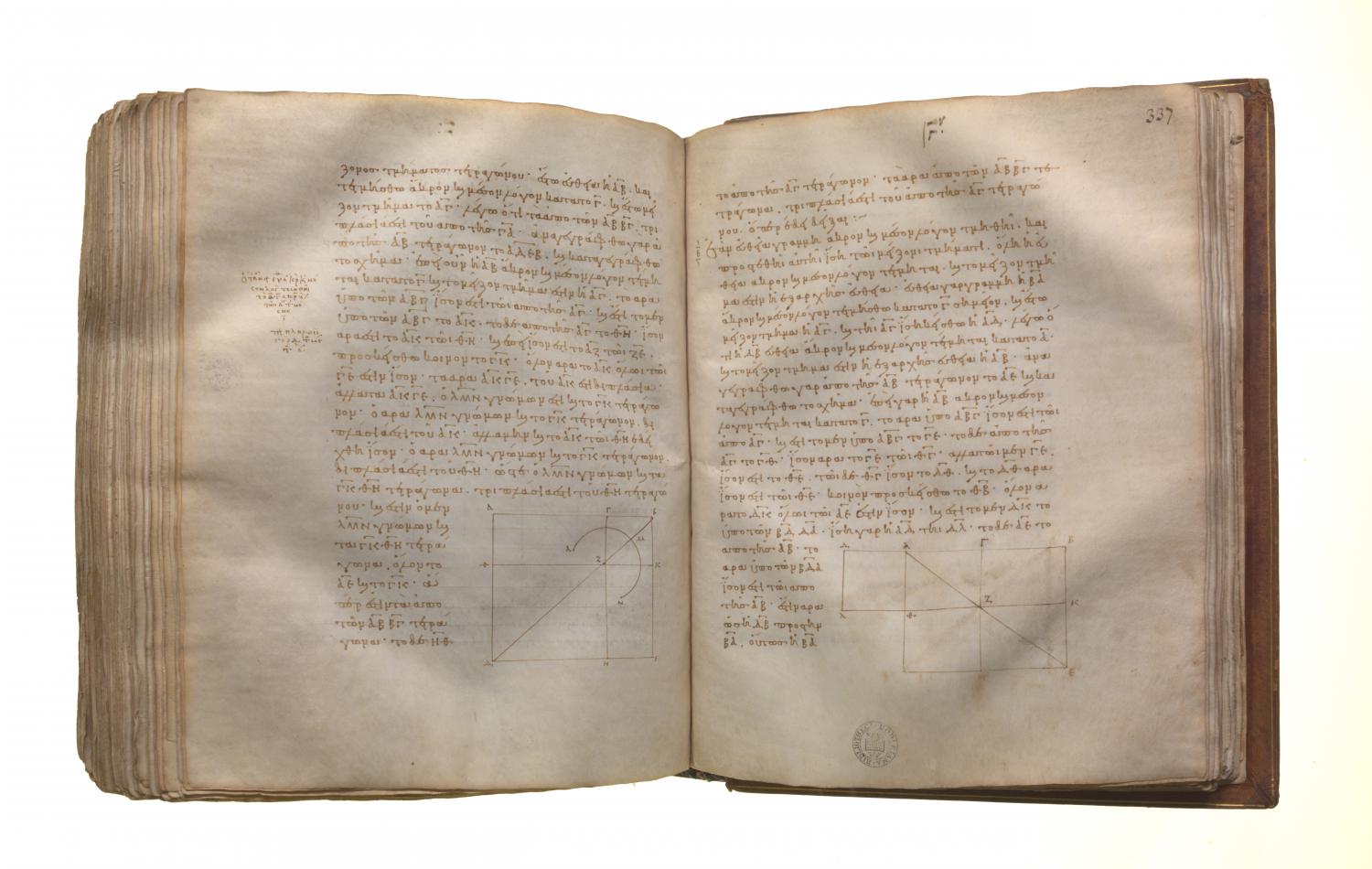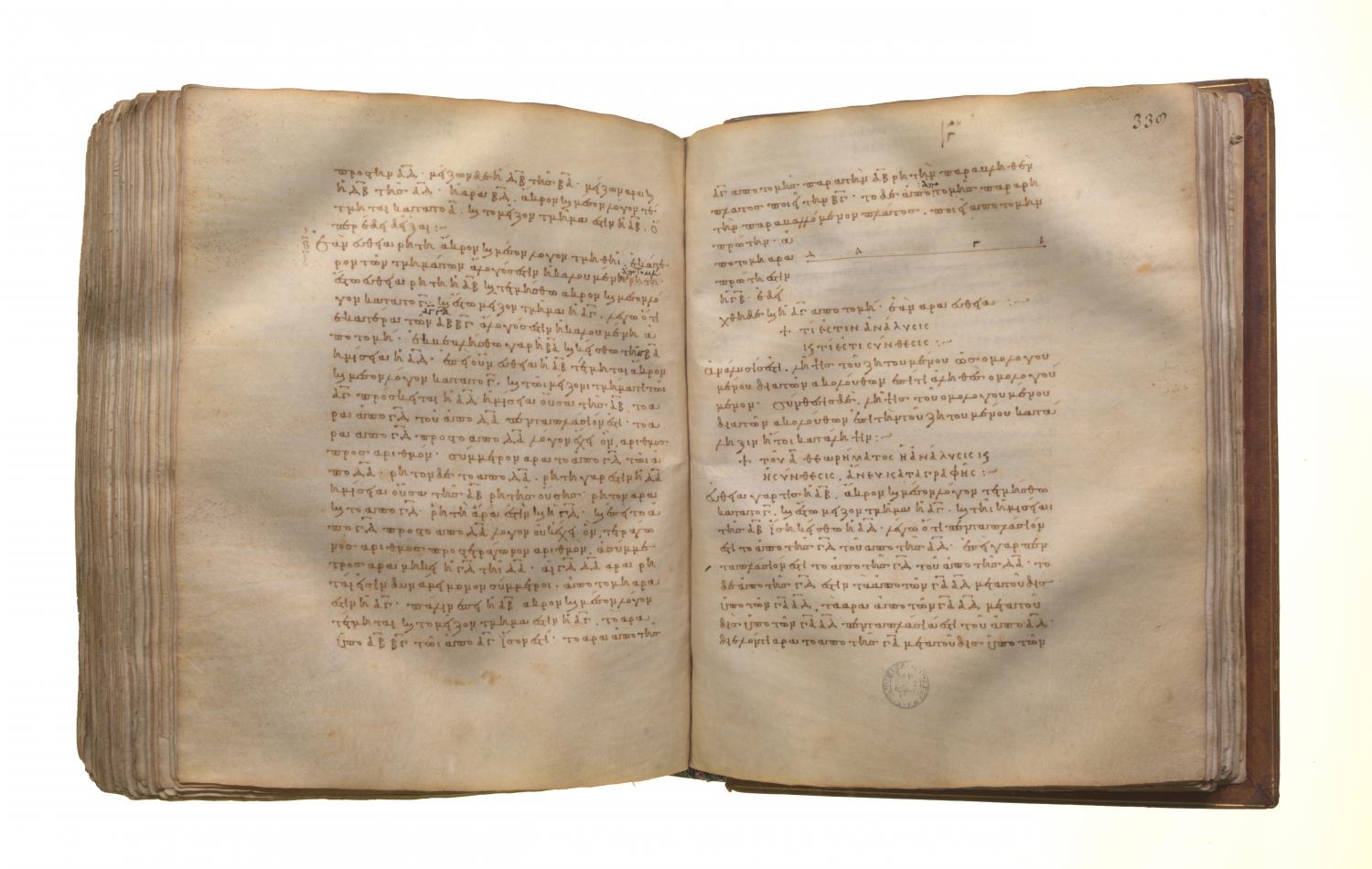Regular solids: Book 13 Proposition 5
Translations
If a straight line be cut in extreme and mean ratio, and there be added to it a straight line equal to the greater segment, the whole straight line has been cut in extreme and mean ratio, and the original straight line is the greater segment. For let the straight line AB be cut in extreme and mean ratio at the point C, let AC be the greater segment, and let AD be equal to AC. I say that the straight line DB has been cut in extreme and mean ratio at A, and the original straight line AB is the greater segment. For let the square AE be described on AB, and let the figure be drawn. Since AB has been cut in extreme and mean ratio at C, therefore the rectangle AB, BC is equal to the square on AC. [VI. Def. 3, VI. 17] And CE is the rectangle AB, BC, and CH the square on AC; therefore CE is equal to HC. But HE is equal to CE, and DH is equal to HC; therefore DH is also equal to HE. Therefore the whole DK is equal to the whole AE. And DK is the rectangle BD, DA, for AD is equal to DL; and AE is the square on AB; therefore the rectangle BD, DA is equal to the square on AB. Therefore, as DB is to BA, so is BA to AD. [VI. 17] And DB is greater than BA; therefore BA is also greater than AD. [V. 14]

